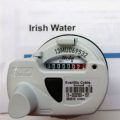
Irish Water : The Importance Of Staying The Course
26 Nov 2015Key Point
In the forthcoming election campaign, some candidates are likely to seek a mandate for abolishing domestic water charges and Irish Water. This would be a mistake and set back the prospects of having water services fit for a modern economy.
Background
Our water industry is a mess . Years of under-investment, poor operations and maintenance and old infrastructure has led to a situation1 at the start of 2015 where
- 940,000 people were at risk of drinking contaminated water
- Over 23,000 people were on boil water notices
- Leakage of water was 49 per cent
- Spare capacity to supply water to Dublin was 2 per cent
- Raw sewage was being discharged in 44 locations.
- Water infrastructure was twice as old as the European average
- Costs are double the UK average.
- We were unique in the developed world in not charging most households for the water they use.
Clearly the old system for delivering water and sewage services by 31 local authorities had failed.
The Government’s solution was to establish a national water utility “Irish Water”. However a large number of Group Schemes (around 1000) in addition to privately owned wells still remain. These are mainly in rural areas and hold a significant market share of about 1/5 for water supply and 1/3 for waste water.
Progress to Date
Since its establishment, Irish Water has made significant progress though much remains to be done.
- 20,000 people have already been removed from boil water notices
- Spare capacity in the Dublin Region has increased from 2% to 8 % which represents significant progress towards the industry standard of 15 %.
- More than 200,000 people in Dublin have had their water made safe
- The First Fix Free scheme has saved an estimated 18 million litres of water every day.
- 50,000 leaks on customer properties have been identified throughout the country.
National Water Utility
It is clear that certain aspects of the establishment of Irish Water could and should have been handled better. However, to conclude from this that the way forward should be to return the provision of water services to 31 local authorities who have a number of other priorities would seem to qualify for Einstein’s definition of insanity “doing the same thing over and over again and expecting different results”..
Water Charges
The introduction of water charges has proven to be controversial. In an attempt to achieve greater public acceptability of the charges, the total charge was capped at €160 for single person households and €260 for others. At present about 70 % of Irish Water customers whose consumption is metered will meet or exceed the level of water use at which the fee is capped. As a result the charging regime scores badly in encouraging water conservation.
A well designed scheme should provide an incentive to conserve while protecting the poor. In these circumstances, the cap should be increased once the First Fix programme is completed.
Abolition of water charges would be a retrograde step. First, it would be very unfair to those in Group Schemes who already pay for their water. They would then have to pay twice for water; once for their own in charges and twice for others in taxes. Secondly, an increase in taxes would be required. Depending on the taxes which were increased; they could either be more regressive than water charges or inhibit job creation.
On Government Balance Sheet
The PwC report found that the dependence on the Exchequer for capital funding has constrained investment in water infrastructure in the past. In 2013, approximately €300 million was invested in infrastructure and this needs to be increased substantially. The Irish Water Business Plan envisages this increasing to €800 million by 2021.
An important benefit envisaged on the establishment of Irish Water as a commercial publicly-owned utility was that it would have the capacity to borrow “off the Government balance sheet”.. For Irish Water to be classified as a market corporation (therefore “off the Government balance sheet”) over 50% of its income must come from customer revenue. Irish Water was deemed by Eurostat2 to “be a non-market entity controlled by Government and should therefore be classified within the Government sector”. As a result the funds Irish Water gets from the Government will enter into the calculation of the General Government Deficit and will reduce the amounts available for other investment, increases in public services or tax reductions.
Given the other demands for public investment in the areas of education, health and housing, investment in water is likely to be crowded out as happened in the past. If we are to achieve a water system fit for purpose in a modern economy, this issue will have to be revisted in the future.
Notes:





